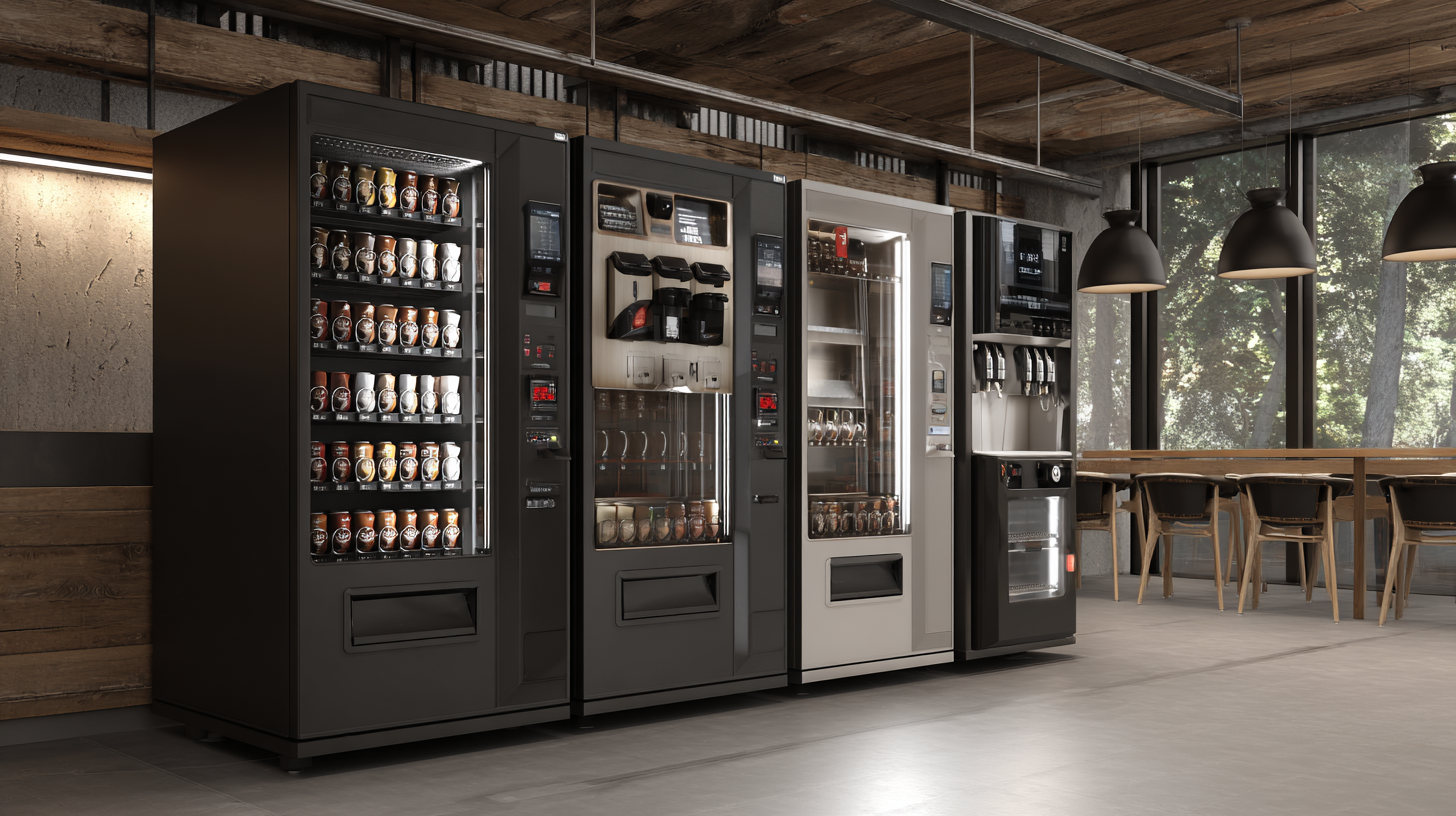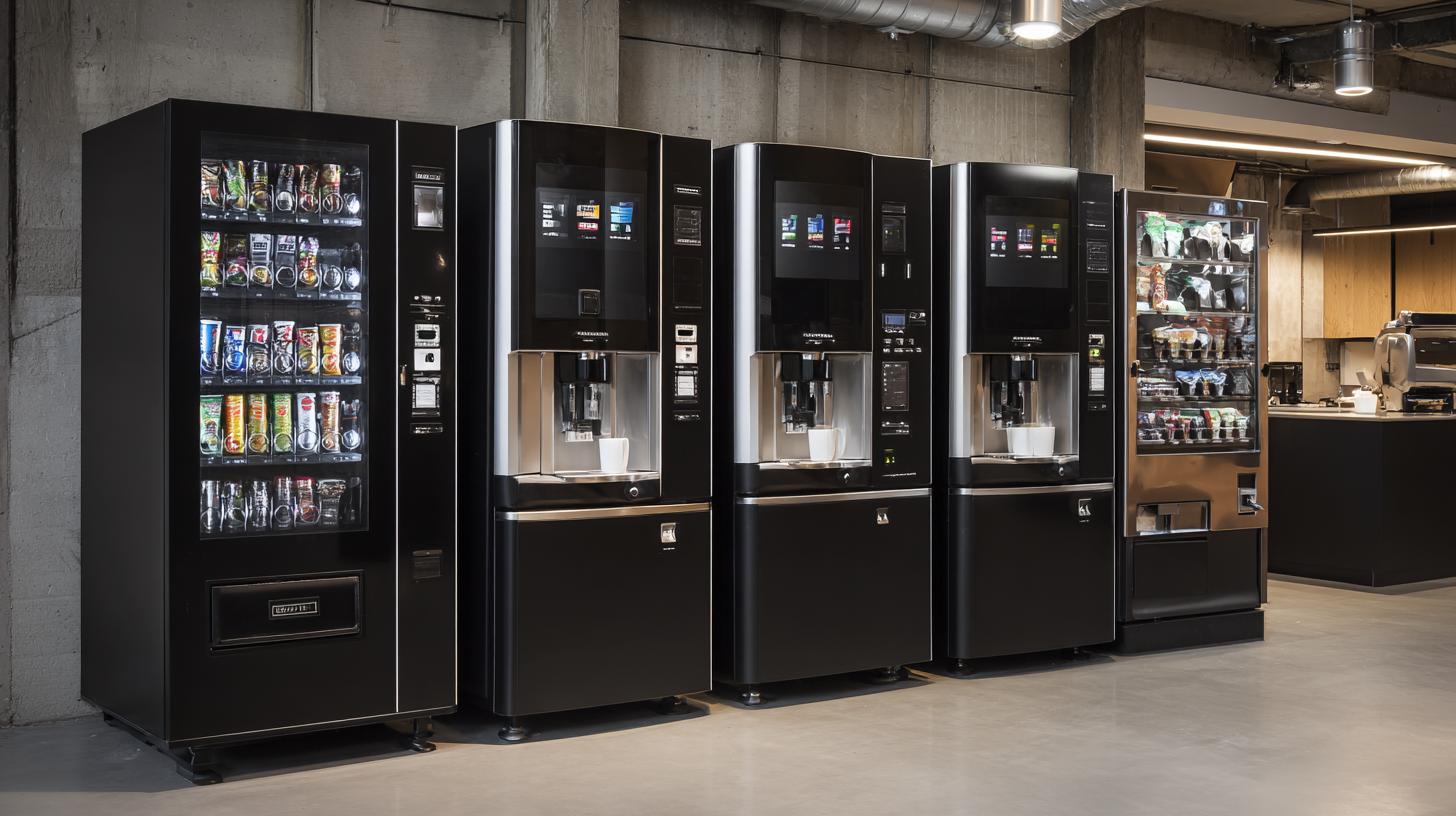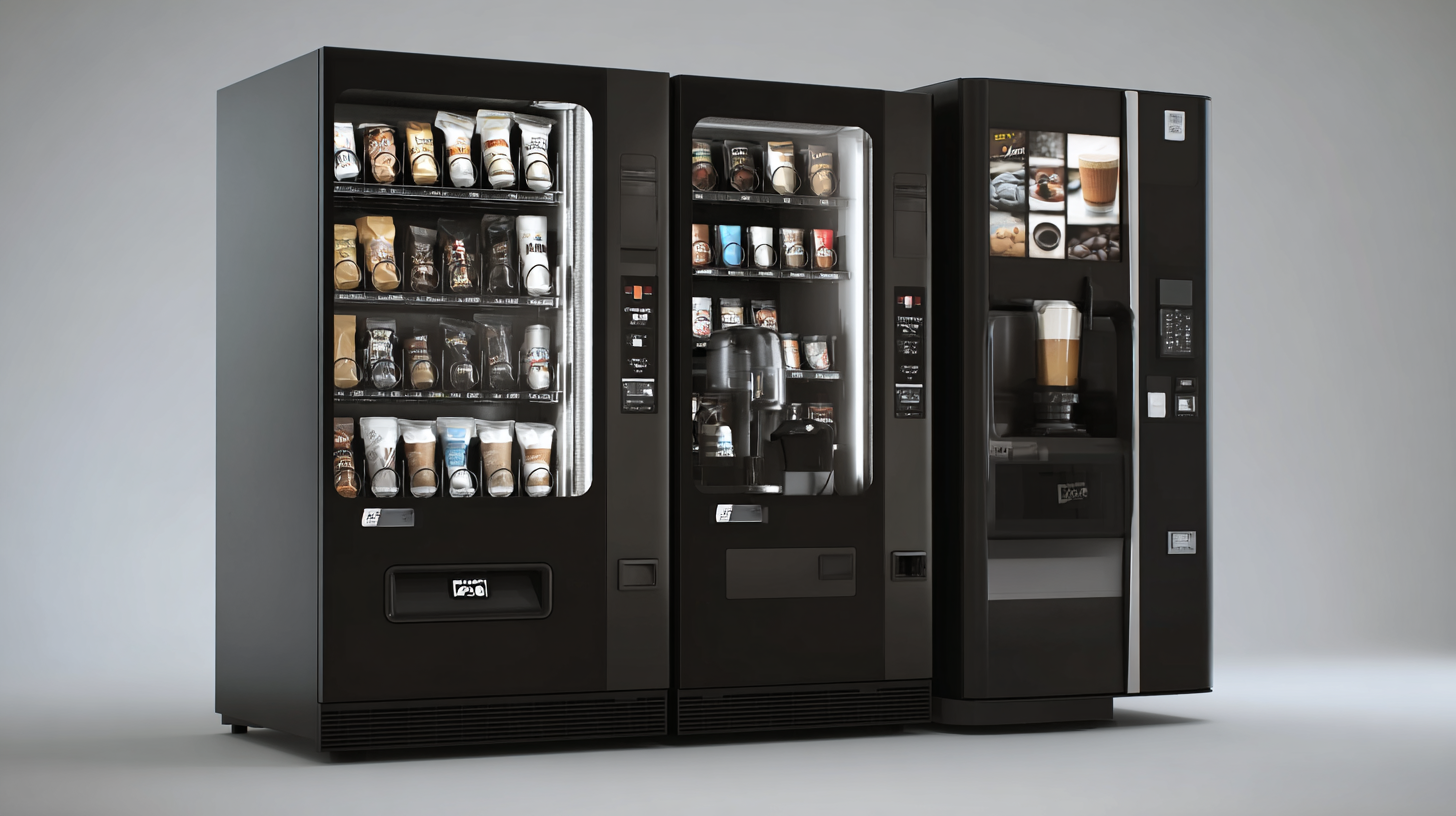
Blog
Innovative Solutions for Maximizing Profits with Best Coffee Vending Machines
In recent years, the coffee vending machines industry has experienced significant growth, driven by the increasing demand for convenience and quality in beverage options. According to a report by IBISWorld, the coffee vending machine market is expected to reach a value of over $1 billion by 2025, reflecting a compound annual growth rate (CAGR) of 3.4%. As consumers continue to seek out quick and accessible coffee solutions, businesses are presented with an opportunity to maximize profits by integrating advanced vending technologies into their operations. This guide will explore innovative solutions and strategies for optimizing the deployment of coffee vending machines, ensuring that businesses not only meet customer expectations but also enhance their bottom line. With the right approach, coffee vending machines can become a lucrative asset in various environments, from offices to public spaces.

How to Identify Quality Manufacturers for Coffee Vending Machines
Identifying quality manufacturers for coffee vending machines is crucial for businesses looking to maximize profits in a rapidly growing market. As the global smart vending machine market is projected to expand from $11.47 billion in 2025 to $36.89 billion by 2032, with an annual growth rate of 18.2%, the demand for high-quality coffee vending solutions is on the rise. Companies should prioritize manufacturers known for their innovative technology, reliability, and customer support. Researching industry reputation, reading customer reviews, and evaluating their range of products can greatly assist in making informed decisions.
Furthermore, it's important to consider the specific features that potential vending machines offer. Look for machines that are not only user-friendly but also equipped with state-of-the-art payment systems, customizable drink options, and efficient maintenance protocols. Engaging directly with manufacturers to discuss warranty policies, service agreements, and potential training programs can also enhance the overall purchasing experience. By focusing on these aspects, businesses can successfully navigate the market and choose manufacturers that align with their goals for quality, profitability, and customer satisfaction.
Innovative Solutions for Maximizing Profits with Best Coffee Vending Machines - How to Identify Quality Manufacturers for Coffee Vending Machines
| Feature | Details | Best Practices |
|---|---|---|
| Machine Capacity | Up to 300 cups per day | Select based on daily foot traffic |
| Payment Systems | Cash, credit/debit cards, mobile payments | Implement multiple payment options to maximize sales |
| Maintenance | Regular cleaning and service required | Schedule regular maintenance every month |
| Customization Options | Variety of beverages, branding options | Offer popular local drinks for customer attraction |
| Energy Efficiency | Low power consumption models available | Choose energy-efficient machines to reduce costs |
| Warranty and Support | 1-3 years warranty depending on manufacturer | Confirm support response times and services offered |
The Role of Technology in Enhancing Coffee Vending Machine Efficiency
The coffee vending machine market is witnessing significant growth, fueled by technological advancements that enhance efficiency and user experience. With the global coffee vending machine market projected to rise from USD 1.5 billion in 2024 to USD 2.3 billion by 2033, it is clear that integrating technology in these machines can create substantial opportunities for profit maximization. Enhanced features such as touchless interfaces, mobile app integrations, and real-time inventory management allow businesses to respond quickly to consumer preferences and enhance operational efficiency.
**Tip 1:** Invest in machines equipped with state-of-the-art brewing systems to ensure high-quality coffee is delivered quickly, which can help attract more customers. Keeping up with the latest coffee trends and technology can set your vending machine apart in a crowded market.
**Tip 2:** Utilize IoT (Internet of Things) technology to monitor machine performance and customer interactions. This data can guide maintenance schedules and inform stock levels, reducing downtime and maximizing sales opportunities, ultimately driving profitability in your vending machine business.

Top Features to Look for in the Best Coffee Vending Machines
When shopping for the best coffee vending machines, it is essential to focus on several key features that can significantly impact both user experience and profitability. One of the top features to look for is the brewing technology utilized by the machine. Advanced brewing methods can ensure that each cup of coffee meets high standards, mimicking barista-quality beverages. Given that the global coffee vending machine market is projected to reach $25.25 billion by 2025, investing in machines equipped with superior brewing features not only caters to rising consumer expectations but also enhances sales potential.

Another important aspect is payment flexibility. Modern coffee vending machines equipped with contactless payment and mobile app integration are becoming increasingly popular. As consumers lean towards convenience and safety—especially post-pandemic—machines that offer multiple payment options will attract a broader customer base. Furthermore, smart vending machines that provide real-time inventory data and self-diagnostic features can help operators manage their inventory efficiently, minimizing downtime and maximizing profit margins. This technological innovation is crucial as businesses navigate evolving market demands and strive to enhance operational efficiency.
Maximizing Profit Margins through Strategic Machine Placement
Strategic machine placement is crucial for maximizing profit margins in the coffee vending industry. According to a report by IBISWorld, the coffee vending machine market is projected to grow at an annual rate of 5.8% over the next five years, driven by increasing consumer demands for convenience and quality. Placing machines in high-traffic areas, such as office buildings, college campuses, and transportation hubs, can significantly enhance visibility and attract more customers. Research indicates that strategically situating coffee machines can increase sales by up to 30%.
Tips for effective placement include analyzing foot traffic patterns and ensuring machines are situated where potential customers are likely to pause, such as near break rooms or lounge areas. Additionally, consider the demographics of the area; for example, younger consumers may prefer locations that offer trendy coffee options, while older clientele might favor traditional selections.
Moreover, monitoring sales data regularly can help in adjusting machine positioning. If certain locations underperform, it might signify the need for a change. Implementing location-based promotions can also drive sales, as evidenced by a study from the National Automatic Merchandising Association, which found that location-specific offers increased transaction frequency by 22%.
Case Studies: Successful Implementations of Coffee Vending Machines
The coffee vending machine industry has witnessed a transformation, driven by innovative implementations that maximize profitability and enhance customer experience. Case studies reveal that businesses integrating smart vending machines have reported a revenue increase of up to 30%. According to the National Automatic Merchandising Association (NAMA), the coffee vending sector is expected to grow by 5% annually, highlighting the lucrative potential of these machines in various environments, from office lobbies to bustling airports.
One exemplary case involves a major corporate office that installed a state-of-the-art coffee vending machine. This machine not only offers a variety of premium coffee options but also utilizes contactless payment technology, catering to modern consumer preferences. As a result, the office reported a 40% boost in employee satisfaction and a corresponding 25% increase in daily cup sales. Furthermore, a recent report from IBISWorld indicated that 70% of customers prioritize convenience and quality, underscoring the importance of offering exceptional coffee varieties through vending machines to capture this emerging market segment effectively.
